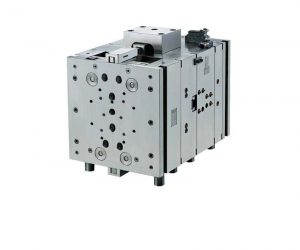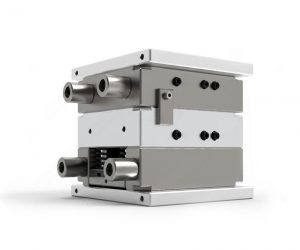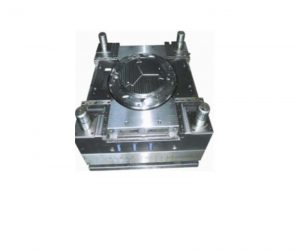The seemingly innocuous gate system in plastic injection molding is, in reality, a nexus of complex fluid dynamics, material science, and manufacturing efficiency. Its design, far from being a trivial exercise, dictates the very viability and quality of the final product, impacting everything from surface aesthetics to the structural integrity of the molded part. This course delves into the intricacies of gate system design, moving beyond simplistic explanations to explore the nuanced interplay of factors influencing optimal performance.
We will dissect the fundamental nature of the gate – not merely as a conduit for molten polymer, but as a critical control point governing flow characteristics within the mold cavity. The seemingly straightforward act of directing the melt flow is fraught with potential pitfalls. Improper gate design can manifest in a spectrum of defects, ranging from subtle surface blemishes and insidious internal voids (often undetectable without advanced inspection techniques) to catastrophic warping and structural failure, rendering the molded part unusable. Furthermore, the gate's influence extends beyond mere product quality; it exerts a significant impact on cycle times, energy consumption, and overall production economics.
The course will explore a diverse array of gate types, extending beyond the rudimentary classifications. We will examine the subtle differences and often counterintuitive behaviors of side gates, point gates, submarine gates, and the intricacies of hot runner systems, each with its own set of advantages, disadvantages, and suitability criteria. The selection of the optimal gate type is not a matter of simple preference, but a rigorous process requiring a deep understanding of the part geometry, material properties (including rheological behavior at elevated temperatures and pressures), and the desired production parameters.
Optimization of the gate system transcends mere parameter adjustment. It necessitates a holistic approach, encompassing finite element analysis (FEA) to predict flow patterns and stress distributions, coupled with empirical validation through rigorous experimentation and iterative design refinement. We will explore advanced techniques for optimizing gate location, size, shape, and orientation, not simply to minimize defects, but to achieve a synergistic interplay between melt flow, cooling dynamics, and stress relaxation, leading to superior part quality and reduced cycle times.
Case studies will analyze real-world scenarios, exposing the reader to the complexities of gate system design in diverse applications. These examples will showcase the problem-solving methodologies employed in addressing challenging design constraints and demonstrating how seemingly minor adjustments to the gate system can yield dramatic improvements in product quality and manufacturing efficiency. Upon completion of this course, you will possess not just a theoretical understanding, but a practical mastery of gate system design, enabling you to navigate the complexities of injection molding with confidence and precision.
What is a runner?
The runner in injection molding: a chaotic ballet of molten polymer. Far from a simple conduit, the runner constitutes a critical, often overlooked, nexus of thermodynamic and rheological complexities within the injection molding process. It's the turbulent artery through which the molten polymer, a viscous, non-Newtonian fluid exhibiting shear-thinning behavior, surges from the machine's nozzle towards its final, solidified destiny within the mold cavity. This seemingly straightforward passage presents a multifaceted challenge, demanding precise engineering to avoid a cascade of potential failures.
Consider the runner not merely as a channel, but as a microcosm of the entire molding process. Its geometry – a seemingly simple network of channels – dictates the flow dynamics, influencing pressure drops, shear rates, and ultimately, the quality of the final part. The slightest imperfection in design can lead to short shots, weld lines, or even catastrophic mold failure. The selection of the runner system – conventional, hot runner, or cold runner – represents a crucial strategic decision, a gamble weighted against production volume, material properties, and cost considerations.
The conventional runner, a relic of simpler times, presents a brute-force approach. Molten polymer floods the system, solidifying upon cooling. This method, while straightforward and inexpensive, results in significant material waste, a byproduct of the runner's inevitable ejection and discard. This waste, a constant drain on resources and profitability, necessitates careful consideration of material costs and efficient scrap recycling strategies.
The hot runner system, a marvel of precision engineering, represents a significant leap forward. By maintaining the runner channels at a temperature above the polymer's melting point, this system eliminates the waste inherent in the conventional approach. However, this elegance comes at a cost – a higher initial investment in sophisticated temperature control systems and specialized mold construction. The payoff, however, lies in increased efficiency, reduced material waste, and potentially superior part quality. The devil, as always, is in the details: precise temperature control is paramount, demanding sophisticated feedback mechanisms and meticulous calibration to avoid thermal runaway or inadequate melting.
The cold runner system occupies a middle ground, a pragmatic compromise between cost and efficiency. Similar to the conventional system, the polymer solidifies within the runner channels. However, the design often incorporates features to facilitate easier removal of the solidified runner, minimizing material loss and simplifying post-processing.
The selection of the optimal runner system is not a trivial matter. It demands a deep understanding of polymer rheology, heat transfer principles, and the intricacies of mold design. The interplay between these factors, often unpredictable and highly sensitive to even minor variations, necessitates a rigorous iterative design process, involving computational fluid dynamics (CFD) simulations and extensive experimental validation. The final design is a testament to the engineer's ability to tame the chaotic ballet of molten polymer, transforming it into a precise, repeatable manufacturing process. Failure to do so can result in costly production delays, subpar product quality, and ultimately, a compromised bottom line.
Why is runner design important?
Runner design can have a significant impact on the quality and efficiency of your injection molded parts. Here are some reasons why:
- Material usage: The runner design can affect how much plastic material is required to produce the parts. A poorly designed runner system can lead to excessive material waste, resulting in increased production costs.
- Cycle time: The runner system's design can also affect the cycle time of the injection molding process. A longer or thicker runner can increase the cooling time and reduce the productivity. A shorter or thinner runner can cause insufficient filling or pressure loss, resulting in defective parts.
- Part quality: The runner design can influence the filling pattern, pressure distribution, temperature gradient, and shear stress of the molten plastic in the mold. These factors can affect the dimensional accuracy, surface finish, mechanical properties, and aesthetic appearance of your injection molded parts.
What are the types and shapes of runners?
There are two main types of runners: cold runners and hot runners. Cold runners are made of the same material as the part and solidify after each injection cycle. They need to be separated from the part and recycled or discarded. Hot runners are heated channels that keep the plastic molten throughout the injection cycle. They do not produce any waste material, but they require more complex and expensive mold design and maintenance.
The shape of the runner cross-section can vary depending on the mold design and material properties. Some common shapes are:
- Circular: This shape has the minimum specific surface area (runner surface area/runner volume), which reduces heat loss and pressure drop. However, it requires both sides of the mold plate to be aligned during production.
- Trapezoid: This shape is easy to process and allows for easy ejection of the runner from the mold. It also provides a flat surface for attaching a gate.
- U-shape: This shape is similar to trapezoid, but with rounded corners that reduce stress concentration and improve flow characteristics.
- Semicircle: This shape combines the advantages of circular and trapezoid shapes, but it is more difficult to process.
- Rectangle: This shape has a larger specific surface area and high resistance to flow, thus it is seldom applied.
How to design a balanced and unbalanced runner system?
In a multi-cavity layout, it needs to be guaranteed that the molten plastic can concurrently fill up each cavity in a uniform way. There are two layouts: balanced and unbalanced.
- Balanced: This layout ensures uniform filling, with each cavity concurrently filled. The length and diameter of each branch runner are equal or proportional to each other. This layout minimizes pressure loss, material waste, and cycle time, but it may require more complex mold design and processing.
- Unbalanced: This layout allows for different lengths and diameters of each branch runner, depending on their position relative to the main runner. This layout is simpler and cheaper to design and process, but it may cause uneven filling, pressure variation, and part quality issues.
What are some tips and best practices for runner design?
Here are some general guidelines for designing an optimal runner system for your injection molding project:
- The size of the runner should be determined by the plastic part size/type, injection speed, and length of the runner. Generally, when the diameter of a branch runner is smaller than 5 – 6mm, runner size will have a greater influence on fluidity; when the diameter is greater than 8mm, there will be little influence on fluidity.
- The internal surface roughness of the runner should be 1.6. In this case, the outer layer melt flows faster than the inner layer melt inside the branch runner, which tends to cool down and thus form a heat insulation layer.
- The runner should be designed on either half of the plastic injection mold. When considering the layout of the cavity and the branch runner, it is better to ensure that when projected on the parting surface, the geometric center of the total projection area of the cavity and the runner overlap with the center of the clamping force.
- If the branch runner is very long, it might be better to further extend the branch runner along the flow direction to form a cold slug well, so that the cold materials will not enter the cavity.
- The runner should be designed to avoid sharp turns, dead ends, or sudden changes in cross-section, which can cause turbulence, shear stress, or material degradation.


